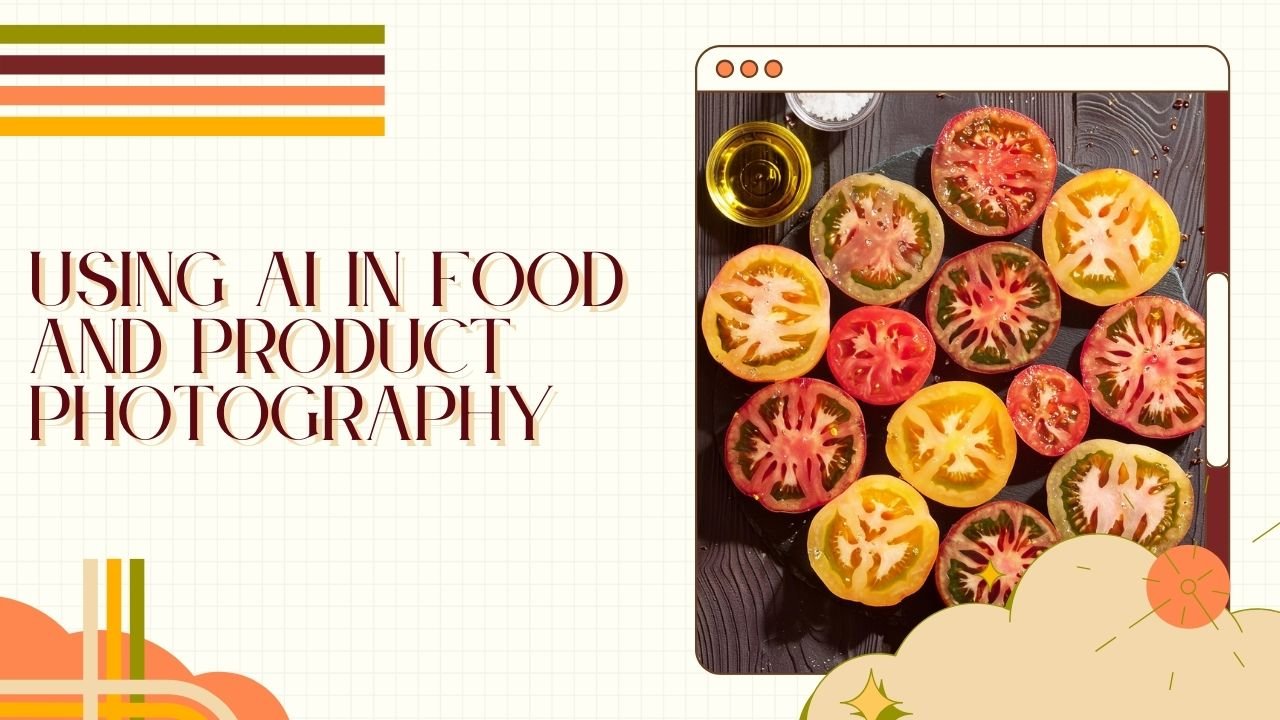Using AI in Product Photography
With the many advances that come every day from the world of artificial intelligence (AI), I’ve been seeing the use of AI in product and food photography become a hot button issue in discussions with colleagues, friends, and clients. Though I am by no means an expert in this field, I do have some thoughts about how to use AI in product photography, when it is appropriate to do so, and how it can be helpful or hurtful to your brand.
Can you use AI for product photography?
Short answer: yes.
Long answer: for some parts. It’s difficult to get AI to generate images of your exact product, especially if it includes words on the package (as most brands do!), but you can use AI to generate backgrounds, props, and lifestyle situs for products to be placed into. To get AI to generate the appropriate images for these assets, you’ll need to do some research into prompt generation. You’ll also need a good bit of patience—this is an imperfect blend of art and science, and sometimes, the results are just plain bizarre. Of course, you also need to make sure that the generated images fit the visual brand that you have designed for your products, too.
I’ve had the most luck using AI as an editing tool rather than a be-all-end-all solution for photography. For example, if a client asks for a certain nail color, I’ll use AI to change the color of my nail polish. Or if they think the frame looks empty and needs another spoon, I can easily use AI to add that in. Wrinkled backdrop? AI can fix that better than I can. Look for a post next week about my favorite edits with AI.
Can I use AI photos commercially?
It depends. The most important thing for you to remember is that this is a new field, and because it’s so new, the rules and regulations that govern it will change frequently until standards are established. As of this writing, you can use photos generated by AI for commercial use as long as you have purchased the license for the program with which they were created. As an advisor to clients, I feel that this is a great opportunity to take advantage of while it lasts. I would anticipate, based on research and conversations with other creatives, that regulations will only get tighter in the years to come.
My one big caution here is that you should never use AI to alter your physical product, whether the packaging or the product itself. Changing the color, enlarging the product, or tweaking it in other ways is not only unfair to your consumers and clients but could open you up to legal issues if the way the product is portrayed is found to be misleading.
Can you use AI for food photography?
Yes. This is one of the ares that I’ve been following closely because I think it’s a field where smart, appropriate use of AI can make sense—if it’s done well. I’ve played around with Photoshop and Adobe Firefly to generate photos of food using AI, and I’ve had great success in generating images of food with both programs. Bowl of cereal? Easy. Chocolate cake? There it is.
The difficulty with relying on these generative programs to create photos of food is that you have very little control over the recipe itself. If there’s something specific about your chocolate cake recipe, such as whole cherries in the batter, for example, it can be difficult to have that represented in the AI generated photo. Again, I’ll caution brands looking to use generative AI to portray recipes that show off your specific product. Not only will eagle-eyed consumers be able to spot inconsistencies in the recipe versus the final photo, but it can get you into tricky legal territory depending on how large of a component your products are in the recipes.
The image on the left was taken by me in natural light. The image on the right was generated using Adobe Firefly with the prompt: vibrant heirloom tomatoes, sliced, arranged on a dark wooden table with olive oil and salt.
What is the best AI for food photography?
Depending on your skill level, you can use anything from Canva’s new generative program to Midjourney to generate food photography. If you’re comfortable with writing the generative prompts that are required for a more advanced program, you should give it a whirl for sure. If you’re not, start off with something like Canva.
I’d encourage anyone who’s comfortable with Photoshop to explore their generative AI features. It’s been my favorite photo-focused AI to use so far, and I like that I can use it as a way to do the work that my clients hire me to do in a better, more effective way rather than as a substitution for the art I love.
A Final Word
When all of this generative AI was announced, the panic that followed was mostly a consequence of artists fearing that their work was about to be swallowed up by the robots. In the months and years that have followed, there have been artists who leaned in to the generative AI as a tool to make their workflows more unique. I love using AI as a way to support my craft, and I think it is an incredible tool for business owners to learn. If you have questions, I’d love to chat with you about it to see if I can help!

